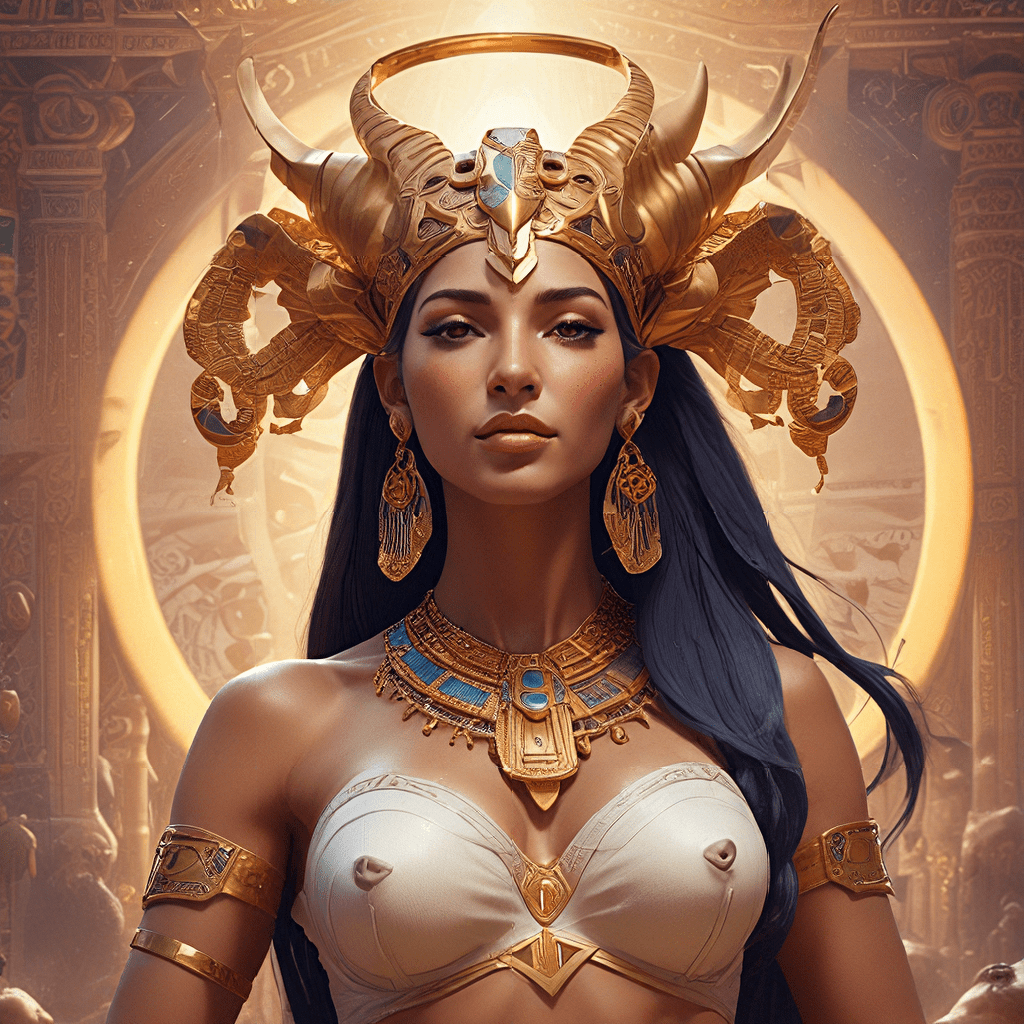Hathor: The Cow Goddess of Love, Beauty, and Music
1. Introduction: A Multifaceted Goddess
Hathor, a prominent figure in ancient Egyptian mythology, was more than just a goddess. She was a complex and multifaceted deity embodying love, beauty, music, joy, motherhood, and much more. Her influence extended beyond the earthly realm, connecting her to the sky, the sun, and the stars. This divine cow goddess played a vital role in the lives of ancient Egyptians, influencing their beliefs, rituals, and daily lives.
2. The Origins of Hathor: A Cosmic Cow
Hathor’s origins are shrouded in ancient myths, suggesting her creation from the very essence of the universe. One tale describes her emergence from the eye of Ra, the sun god, symbolizing the creative force of the cosmos. Another myth speaks of her birth from a primordial cow, representing the nurturing and fertile power of the earth. Through these narratives, Hathor’s connection to the celestial realm becomes evident, linking her to the creation of the world and the cycle of birth, life, and death. The Milky Way, with its shimmering expanse, is often seen as her celestial form, a breathtaking reminder of her cosmic identity.
3. Hathor, Goddess of Love and Beauty
Hathor was revered as the epitome of love and beauty. Her captivating charm and flirtatious nature drew people to her, embodying the irresistible allure of passion and affection. She played a crucial role in marriage, blessing couples with fertility and ensuring the harmonious bond between husband and wife. Her connection to childbirth extended beyond mere fertility, as she was a protector of women and children, guiding them through the delicate phases of motherhood. The lotus flower, with its delicate petals and symbolic connection to creation, became associated with Hathor, representing the blossoming of love and the beauty of life.
4. Hathor, the Divine Musician
Music held a special place in Hathor’s heart. She was not only a lover of music but also a skilled musician, believed to possess a voice that could enchant and captivate. The sistrum, a musical instrument used in religious ceremonies, was closely associated with Hathor. Its rhythmic shaking, often accompanied by singing and dancing, served to appease the gods and created a sense of joy and celebration. Ancient Egyptians believed that music held magical powers, capable of influencing the world around them, and Hathor, as the divine musician, had command over this ethereal force.
5. The Dual Nature of Hathor: Love and Fury
Hathor’s character was not confined to the realm of love and beauty. She possessed a darker side, capable of transforming into a fierce and destructive goddess. One myth tells of Hathor’s wrath, where, enraged by humanity’s transgressions, she embarks on a path of destruction, slaughtering countless people. Fortunately, Ra, her father, intervened, calming her fury and restoring order. This duality reflects the unpredictable nature of love, its capacity for tenderness and passion, but also its potential for consuming rage and devastating consequences. Hathor’s duality reminds us that even the most benevolent of forces can unleash destructive power when provoked.
6. Hathor and the Rituals of Love and Fertility
Hathor’s influence permeated ancient Egyptian society, inspiring numerous rituals and ceremonies dedicated to her. Temples dedicated to her were built across the land, serving as centers for worship and celebration. People would offer gifts, sing hymns, and perform dances in her honor, seeking her blessings for love, fertility, and protection. The Hathor festival, known as “The Festival of the Cow,” became a time of joyous celebration, with people dressing up as cows, singing and dancing, and offering sacrifices to the goddess. These rituals served to strengthen the connection between humans and the divine, seeking Hathor’s favor and guidance in matters of love and life.




